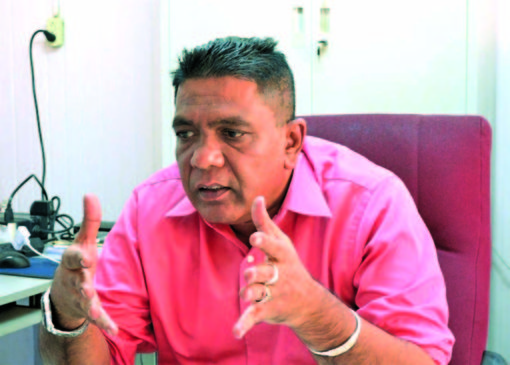
As the objections component of Claims and Objections has ended, the People’s Progressive Party (PPP) is raising concerns over the thousands of objections made in two particular areas and fears that they are part of a ploy to disenfranchise thousands.
It was revealed on Tuesday by Guyana Elections Commission (GECOM) Commissioner Sase Gunraj that approximately 13,000 objections have been made. According to Gunraj, these objections were made primarily at the Fort Wellington GECOM offices in Region Five (Mahaica-Berbice).
In an interview with this publication, PPP’s Chief Elections Scrutineer Zulficar Mustapha revealed that for Region Five, over 9000 objections were made at Fort Wellington, while over 3000 were made at the Mahaicony offices.
It is understood that Belladrum and Rosignol Secondary schools are just some of the locations that GECOM used for the Claims and Objections, which ended on November 4 and 11 respectively.
“They made thousands of objections and I can say they were unsubstantiated. Because the only way someone’s name can be removed from the list is if they’re dead and you have to produce a valid death certificate, or in case of insanity, you have to produce a certificate from a qualified doctor,” Mustapha said.
He added, “Now, in Region six, they made thousands of objections which they had to withdraw because they had no evidence. In region five, they made close to 13,000 objections. These people are objecting wildly and they want to take off people’s name from the list”.
Criminal offence
Mustapha noted that it is a criminal offence to object wrongfully to someone’s name on the Preliminary List of Electors (PLE), such as in cases where the objection is that the person is dead, when, in fact, they are alive and well. He explained that the PPP itself has done some digging and found the persons being objected to.
“And I intend to attend the hearing myself in Region Five, whenever those hearings are held, and I intend to produce those persons. I am hoping that GECOM will report (wrongful objections) to the Police and the necessary action be taken”.
Even with the unusually high number of objections in a particular registration area, the total number of objections is in stark contrast to the often-repeated statement from the Government that the voters’ list was bloated by as many as 200,000 names, thus, necessitating the controversial House-to-House exercise.
The Government side and President David Granger have repeatedly claimed that the existence of 200,000 extra names necessitated House-to-House Registration, an exercise that ended up delaying GECOM’s preparations for elections as both sides struggled for and against the exercise.
On the sidelines of a GECOM court case back in July, Chief Elections Officer (CEO) Keith Lowenfield, himself, had admitted that he never advised the President that the voters’ list was bloated with 200,000 names, raising questions about where President Granger got such information.
“I have not engaged His Excellency on the numbers game. And I cannot pronounce on that…it’s speculative. I would want to do an exercise to determine that amount,” Lowenfield said when asked about the President’s comments.
In addition, the very voters’ list which was derived from the National Register of Registrants (NRR) was used for Local Government Elections (LGE) last year. The elections were held with only minor hiccups, leading many to question whether the advocacy for H2H was nothing more than a delaying tactic.



